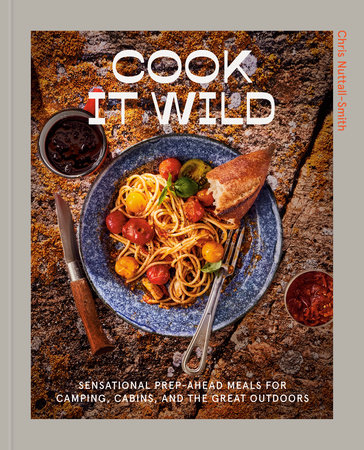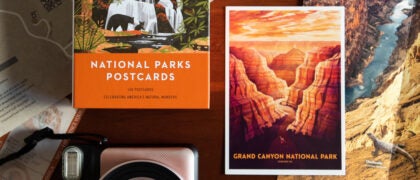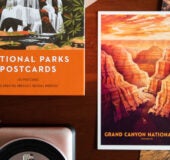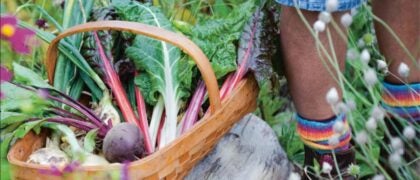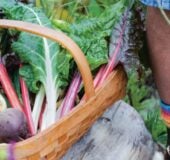Introduction The trip began with a big misunderstanding. I’d invited a group of friends for a weekend of wilderness camping, a two-hour paddle into a postcard of a park where we’d have a remote northern lake all to ourselves. The water, I promised, would be warm and calm and as clear as gin. The scenery would take their breath away. There’d be crackling campfires, raucous games of Cheat, and hammocks swaying in the summer breeze. And we would eat and drink like, well—this was camping, I warned them. There were no fridges, or food delivery, or dishwashers for the cleanup. We’d have a single backpacking burner as our stove. Plus, we’d have to pack light. So, of course, my friend Sasha shows up with a block of frozen squid.
As she told me what she had planned for the menu, I listened with growing alarm. There would
be buttery roasted meats and vegetables, fire-baked flatbreads, platters of drinking snacks, and “a showstopper,” as she called it, for Sunday night. It all sounded great, but I had no idea how she’d pull it off. We hadn’t come out here to sweat over dinner all day.
The others in the group got the same memo: “Pack light” is apparently camping code for “bring the entire contents of your fridge.” They planned buttermilk pancakes, freshly baked biscuits, fried lake-fish sandwiches, and fancy cocktails for twenty. (We were a party of nine.) What they didn’t bring was freeze-dried, canned, or instant anything. Or as most people would call it,
camping food. Part of me understood their enthusiasm, at least. When I wasn’t paddling northern lake chains with food-obsessed friends or backpacking Rocky Mountain passes, I earned my living as a food writer, well-traveled restaurant critic, and a judge on TV cooking shows. But until that weekend, I’d always kept my outdoor and food lives separate. I assumed that wild living and really good eating just didn’t mix. Yet what happened through the next forty-eight hours wasn’t the fiasco I expected. Although they were short on experience at cooking in the wild, each of them was a fanatical meal prepper. They’d done the work
in advance. When we finally pulled in to our lakeside site, those friends of mine set to pouring drinks that they’d mixed and frozen ahead. They served fresh lime margaritas and slushy white wine. Frosty negronis tasted sweet and bitter and magnificently boozy, and they hit with a brain-freezing jolt. A plate of country ham appeared, along with sliced summer sausage and fat, sweet cherries; then lacy, crunchy, creamy cacio e pepe–style flapjacks—what Italians call
farinata—from a just-add-water batter that could last months on end in a pack.
We had more standout meals through that single weekend than I’d eaten in a lifetime outdoors. But what stuck out the most was how ingeniously effortless it all was. If it could be chopped, measured, mixed, marinated, braised, frozen, or fully premade at home, my friends had done it ahead. And meal prepping for the wild doesn’t have to mean endless at-home kitchen labor, either. I began to see simple, practical, high-reward hacks that could dramatically change the way we cooked and ate outside.
“Prep ahead” could mean melty, sublimely tender, fire-roasted vegetables that took five minutes of hands-on time at home. Or instant, make-anywhere (as in make-it-at-7,500-feet-behind-a-windbreak- as-a-storm-rolls-in
anywhere) shallot and cheese fondue that’d blow minds pretty much any place on Earth. It could mean comforting, protein-packed, no-refrigeration curries and killer Japanese-style slaw on Day 7 of a trip, just when the crunchy vegetable daydreams were starting to get intense.
Just ten minutes of dumping dry ingredients into a bag at home could mean moist, exquisite chocolate-chunk fire cake from a simple mix—zero eggs required.
And yeah, I guess you could even eat
squid while camping. My friend Sasha’s absurd-seeming packing soon started to make perfect(ish) sense.
On our second night at that lakeside campsite, Sasha seared it over the fire with pre-caramelized vegetables and Spanish rice, turning what I had been sure was the all-time dumbest-ever camping protein into the star of a smoky, spicy, spectacularly crackly crusted paella. I’m pretty sure it was the greatest thing I ate all year. (You’ll find the recipe on page 131.)
We were stuffing our faces in the starlight one night when someone mumbled, “This is camping?” All I could think was that everyone should be eating this well outside.
Cook It Wild isn’t just another camping cookbook. By harnessing the hassle-free power of meal prepping,
Cook It Wild puts sensational outdoor eating in the hands of any camper or cook. Many of its very best recipes take little more effort in the wild than tipping fully prepped ingredients into a pot, onto a platter, or over the coals in the wild. More than half of the recipes in
Cook It Wild take ten minutes or less at camp.
With its practical advice on planning, prepping, and packing for your trip, this book will vastly expand what you think of as “camping food” too. Because isn’t it time that camp cooking caught up with how people actually want to eat?
Cook It Wild offers softly caramelized sumac-roasted shallots and breathtakingly tasty dan dan noodles. It’s simple, pre-prepped flatbreads that turn blistered and smoky over a camp stove or fire. Lightweight, one-pot red lentil dal that can be packed for roughing it but tastes every bit like glamping, and takes about as long to serve as reconstituting a freeze-dried meal. There’s even a sublimely creamy risotto, real whipped cream (zero whisking required!), and the best near-instant French toast you’ll ever eat.
Better still,
Cook It Wild is designed with
your wild in mind, no matter how or where you like to get outside. Whether you’re a backpacker, a car or RV camper, a beach rat (hands up!), or a paddler. Whether your wild place of choice is a ski hut, cabin, hunting or fishing camp or cottage, the local park, or a cozy backyard, we have you covered.
This book’s seventy-five-plus field-tested recipes are categorized with simple symbols so you can tell, at a glance, the types of trips they’re ideal for, what special gear they may require, and even how much they’ll weigh in your pack. Also, since pretty much nobody wants to bring a cookbook camping,
Cook It Wild is designed so you can leave it at home: Every recipe’s “At Camp” instructions are laid out so you can easily snap a photo to carry on the device of your choice.
But most important of all,
Cook It Wild keeps front and center
why we camp. We do it to get away, to recharge, and to spend quality time with friends and family. We do all this because it’s ridiculous and, yes,
delicious fun—and you can absolutely do it too.
Copyright © 2023 by Chris Nuttall-Smith. All rights reserved. No part of this excerpt may be reproduced or reprinted without permission in writing from the publisher.





